How Much Do New Energy Car Companies Still Need to Achieve Their 2025 Annual KPI?
By the end of the third quarter of 2025, the varying annual sales target completion rates reveal mixed fortunes for car companies. Looking back at the KPIs set by these companies at the beginning of the year, how are they doing now, and can they still achieve them on time?
Recently, the China Automotive Technology and Research Center announced the completion rates of annual targets for major new force brands for the period from January to September this year, clearly showing the performance of each brand. We have made a brief statistical summary, and the situation is as follows:
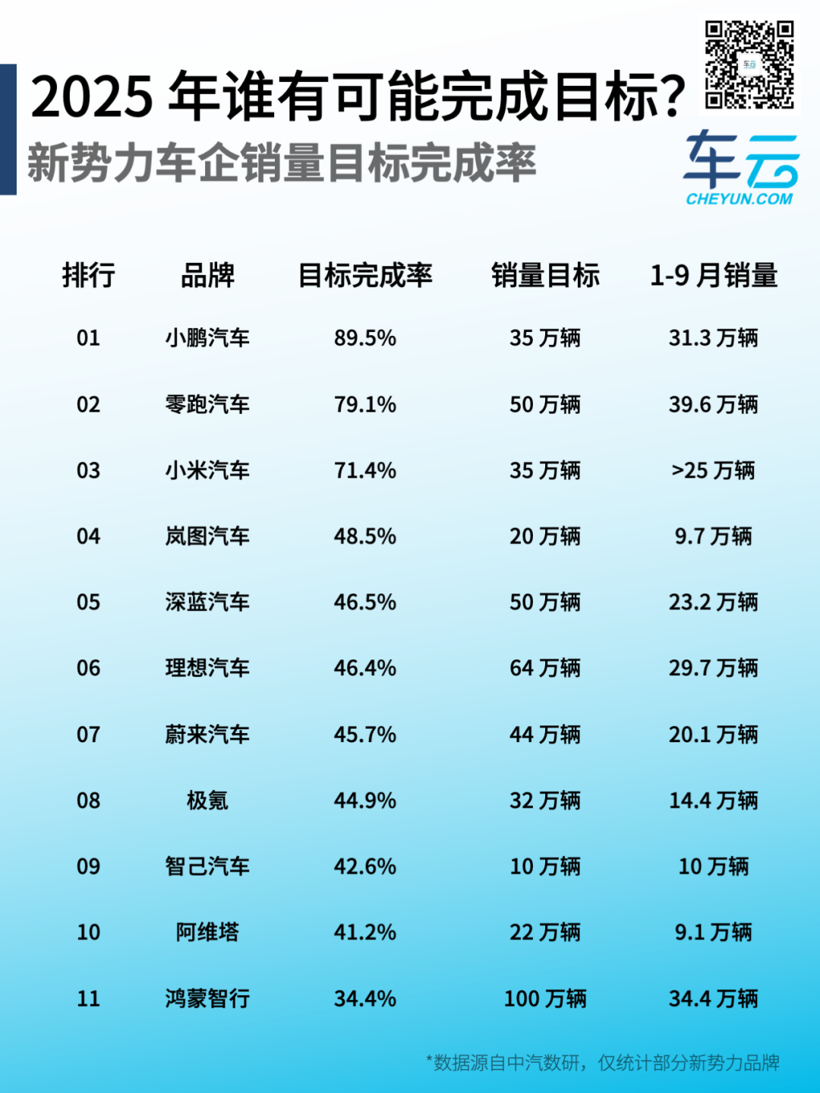
Among the new car-making forces, Xiaopeng quietly ranks first with a completion rate of 89.5%.As of September 2025, Xpeng's cumulative sales reached 313,000 units, exceeding the annual target of 350,000 units. This achievement is attributed to its product strategy of "refining, reducing, differentiating, and going global," as well as continuous breakthroughs in the field of intelligent driving, and is also significantly related to Xpeng's relatively pragmatic goal setting.
Leap Motor follows closely with a completion rate of 79.1%, which is not surprising at all.In the first nine months of this year, Leapmotor's cumulative sales reached 396,000 vehicles, leaving only 114,000 vehicles short of its annual target of 500,000. With the dual support of pragmatic goals and outstanding sales, it is highly anticipated what kind of report card Leapmotor will ultimately deliver this year.
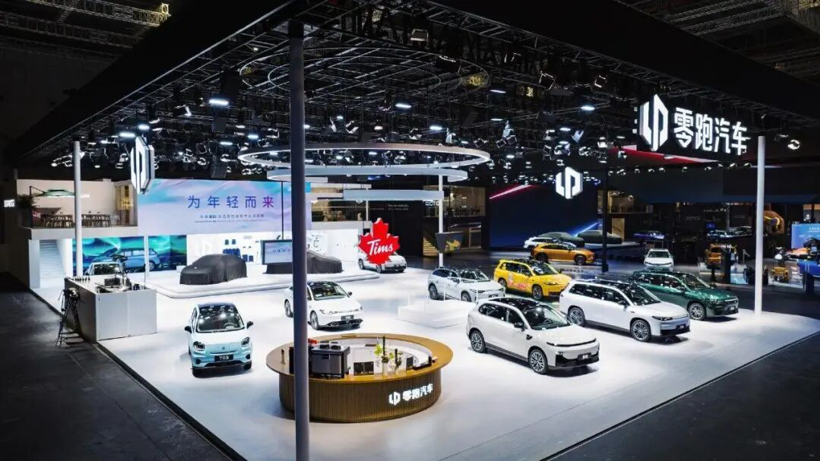
Ranked third is Xiaomi, which has achieved 71.4% of its sales target, with cumulative sales exceeding 250,000 units.They are still 100,000 vehicles short of their 350,000 target. Although the Xiaomi YU7 model has been well-received in the market, ramping up production capacity and managing the supply chain remain key challenges in reaching their target.
In contrast, NIO, which has a profit target this year, has only achieved a completion rate of 45.7% in the first three quarters.Despite Leado's L90 sales surpassing 10,000 units and the enthusiastic response to the NIO ES8 after its launch, the overall growth rate still struggles to support the annual sales target, and NIO's cumulative sales have clearly fallen short of expectations.Additionally, Li Auto achieved a completion rate of 46.4%, Zeekr achieved a completion rate of 44.9%, and HarmonyOS achieved a completion rate of approximately 34.4%.These brands are facing issues such as long product iteration cycles, intensified market competition, and overly ambitious annual target setting. Currently, the overall completion rate of their goals is not ideal.
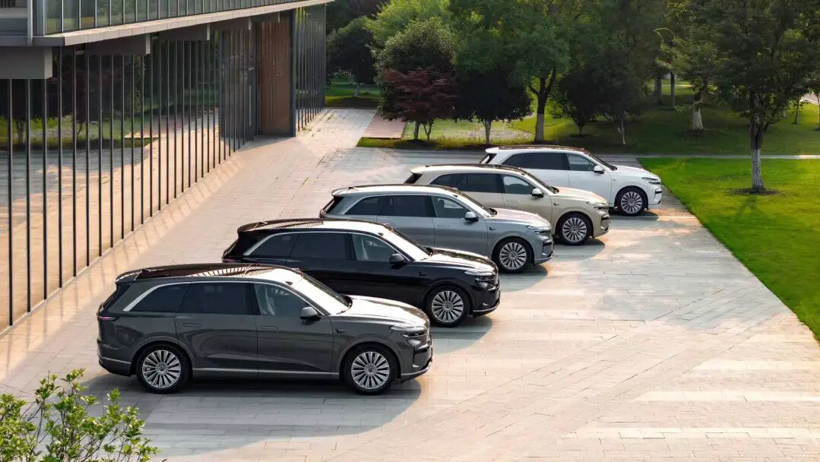
It is worth mentioning that,BYD's sales from January to September exceeded 3.26 million units, achieving approximately 70.87% of its 2025 target.BYD, with its strong production and delivery capabilities and supply chain integration abilities, is using competitive pricing to boost sales while maintaining a very short delivery cycle. Its sales are expected to further explode in the fourth quarter, further squeezing the growth space of new forces.
Based on this year's data, which car manufacturers are still on track to meet their sales targets? Considering the peak sales period in September and October, manufacturers should have reached approximately 70% of their targets by now to be likely to meet their sales goals. If they exceed 65%, there is still a chance to make a final push. According to the data, it is almost a certainty that XPeng Motors and Leapmotor will achieve their targets. With continued increases in deliveries, Xiaomi and BYD also have a good chance of meeting their goals. However, the situation for other car manufacturers appears less optimistic.
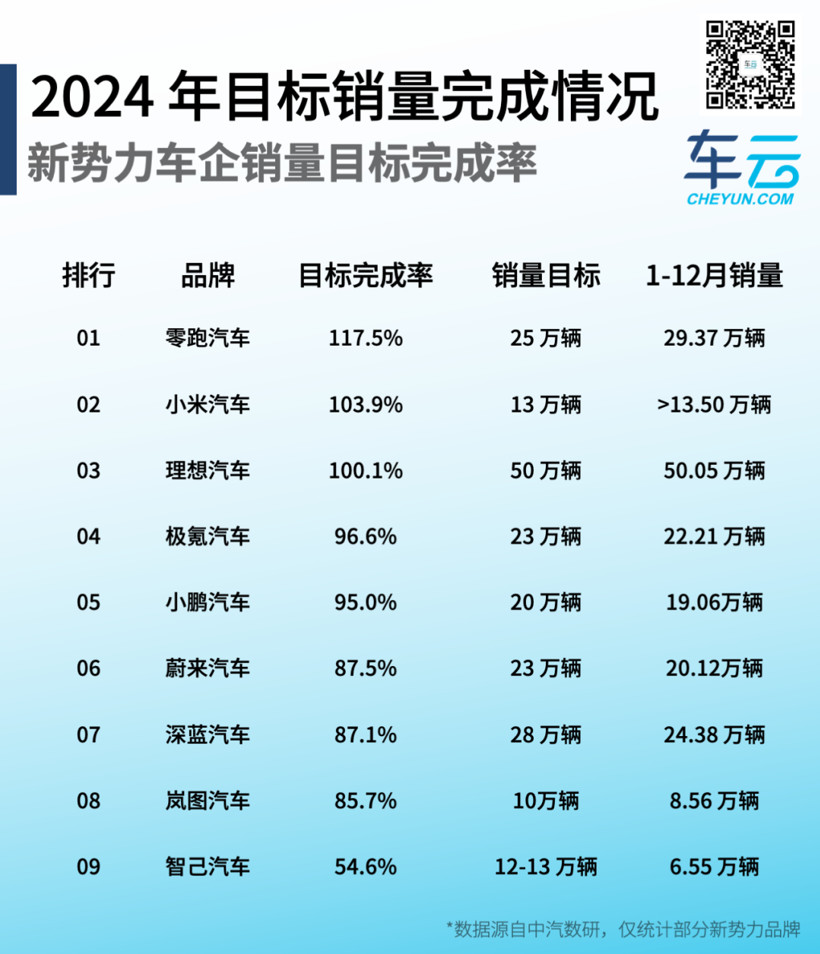
It is said that the automotive industry is particularly competitive this year, and this can be seen from the sales figures. Compared to this year, the target completion rate for new car manufacturers in 2024 is expected to be overall better. This year, various car manufacturers have made adjustments to their sales targets to varying degrees. Among them, Leapmotor's 2025 sales target has been increased by double compared to 2024, Xiaomi's target sales have nearly doubled, and NIO, Li Auto, and XPeng have also made adjustments to different extents, with NIO's sales target for this year almost doubling compared to last year.
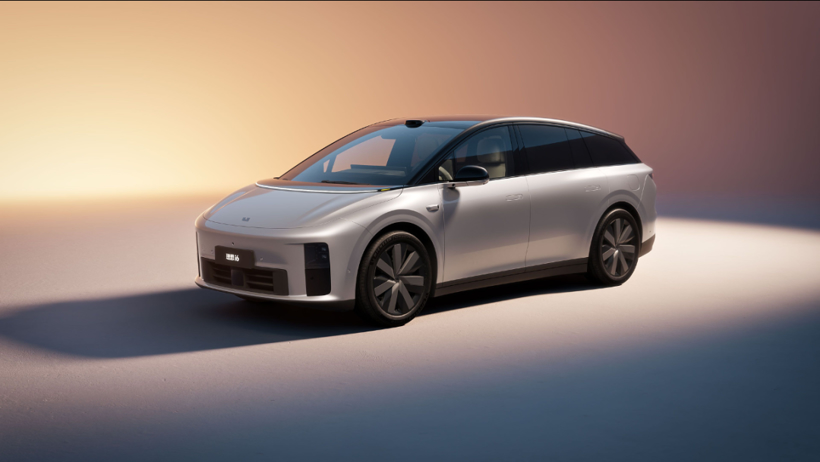
Despite the impressive performance of models like the NIO ES8 and Li Auto i6 after their launch, it remains challenging for these models to achieve large-scale deliveries in the short term, making it difficult to support significant sales figures. NIO CEO William Li previously stated that the production of the NIO ES8 for the year has already been sold out, and the estimated delivery time for the Li Auto i6 exceeds 10 weeks. However, as the end of the year approaches, it remains challenging for them to meet their expected targets.
As the traditional peak sales season of "Golden September and Silver October" arrives, the fourth quarter becomes a critical period for car companies to achieve their targets. Leading companies like BYD and Geely, with their comprehensive product matrix, channel penetration advantages, and strong delivery capabilities, may pose a certain impact on the new emerging car companies. Emerging leaders like XPeng and Leapmotor need to optimize their sales strategies to stabilize sales and remain grounded, while brands like NIO and Li Auto need to refine their delivery processes and accelerate the production and delivery capabilities of "hit" products.
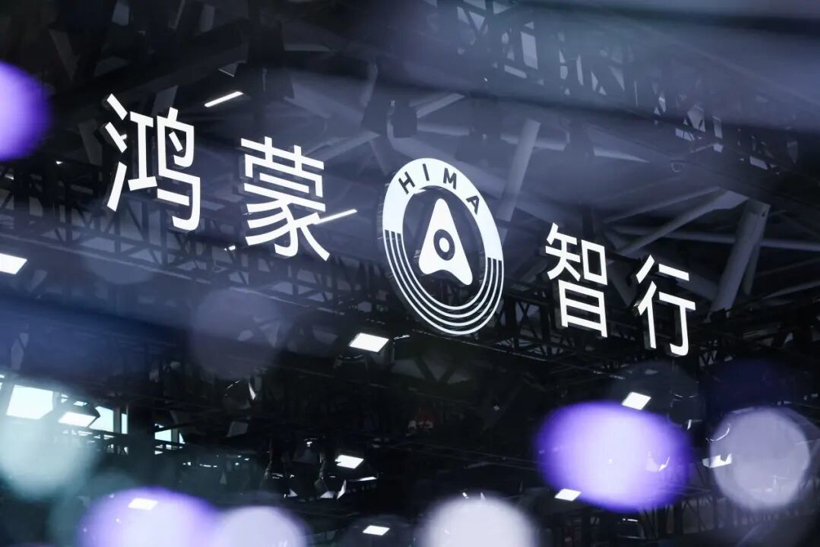
In this never-ending marathon, achieving annual goals is only a stage victory. When the market shifts from "incremental competition" to "stock game," car companies should avoid using "tricks" like releasing a large number of 0-kilometer used cars, creating the illusion of a significant short-term sales increase. This not only harms healthy market competition but also damages brand reputation, leading to negative consequences.
The focus of competition among car companies has now shifted from sales scale to the comprehensive competitiveness of system capability, technological strength, and global layout. As Li Shufu, Chairman of Geely Holding Group, said: "The development of the automotive industry must focus on promoting high-quality development, avoiding clever tricks and opportunism, with a long-term vision and commitment to long-termism." Only in this way can one maintain steady progress in the wave of new energy.
【Copyright and Disclaimer】The above information is collected and organized by PlastMatch. The copyright belongs to the original author. This article is reprinted for the purpose of providing more information, and it does not imply that PlastMatch endorses the views expressed in the article or guarantees its accuracy. If there are any errors in the source attribution or if your legitimate rights have been infringed, please contact us, and we will promptly correct or remove the content. If other media, websites, or individuals use the aforementioned content, they must clearly indicate the original source and origin of the work and assume legal responsibility on their own.
Most Popular
-

At Least 44 Dead in Century-Old Fire! Questioning Hong Kong's Hong Fu Garden: Why Has the Path to Fire Resistance Taken 15 Years Without Progress?
-

Satellite chemical's profits surge! can the 26.6 billion yuan high-end new materials project meet expectations? a review of progress on four major projects
-

Key Players: The 10 Most Critical Publicly Listed Companies in Solid-State Battery Raw Materials
-

Estun Turns Profitable in 2025 Half-Year Report, Industrial Robot Shipments Rank First Among Domestic Brands
-

Avatr Files for IPO on HKEX, Plans to Complete Listing in Q2 2026






